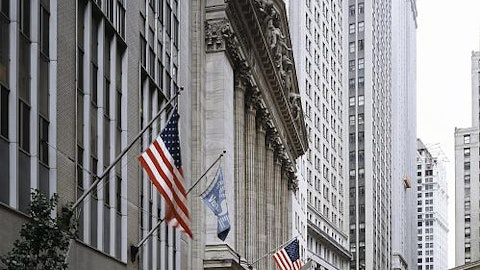Note: This article was originally titled ‘Bear Market Stocks: The Dividend Investors Guide’. It has been expanded and updated.
Table Of Contents
– What Is A Bear Market?
– Is Another Bear Market Ahead?
– The Mindset Needed To Beat Bear Markets
– Recession-Resistant Industries
– Bear Market Stock to Buy: Wal-Mart Stores, Inc. (NYSE:WMT)
– Bear Market Stock to Buy: Johnson & Johnson (NYSE:JNJ)
– Bear Market Stock to Buy: General Mills, Inc. (NYSE:GIS)
What Is A Bear Market?
The name ‘bear market’ invokes fear, and for good reason. Market-wide stock declines are called ‘bear markets’.
What is a bear market? Investopedia defines a bear market as:
A market condition in which the prices of securities are falling, and widespread pessimism causes the negative sentiment to be self-sustaining. As investors anticipate losses in a bear market and selling continues, pessimism only grows. Although figures can vary, for many, a downturn of 20% or more in multiple broad market indexes, such as the Dow Jones Industrial Average or Standard & Poor’s 500 Index, over at least a two-month period, is considered an entry into a bear market.
The 20% decline threshold is what differentiates a bear market form a merepullback or market correction.
– Pullback: Market loss of 0% to 10%
– Correction: Market loss of 10% to 20%
– Bear Market: Market Loss of 20% or more
Bear markets send shivers down the spines of timid investors… And for good reason. Seeing the value of your stocks falling is unnerving.
There is however a silver-lining (silver fur?) to bear markets.
Bear Markets provide investors with opportunities to buy stocks at bargain prices.
Dividend investors in particular should be happy to see bear markets. The lower stock prices go, the greater dividend yield new purchases will have.
Higher dividend yields mean a shorter dividend payback period. Your investments will pay you more when purchased in a bear market.
What stocks you purchase before a bear market matters. If you invest in high quality businesses that are likely to pay rising dividends through the bear market, then you will feel confident in your portfolio. You can also reinvest those dividends into stocks that have seen their prices fall significantly.
Here’s an example of the type of bargains available during recessions…
AFLAC Incorporated (NYSE:AFL) stock briefly traded for dividend yields over 7% during 2009. The stock currently has a 2.4% dividend yield. Aflac stock looks cheap at current prices. Click here for detailed Aflac analysis. You can imagine how much of a steal the stock was when it yielded more than 7%.
This article examines bear markets in detail and provides 3 high quality dividend growth investment ideas to recession-proof your portfolio.
The reason there are only 3 is because markets are fairly pricey today. Most high quality businesses are currently overpriced. The 3 examined in this article all excel during recessions and are trading at fair or better prices today.
We are currently in the midst of a 6+ year bull market. The last bear market ended in March of 2009. Are we do for another bear market soon?
Is Another Bear Market Ahead?
The short answer to this question is yes.
There will always be another bear market. I am not certain of many things. I am certain that there will be another recession.
In 1929 (just before the Great Depression) economist Irving Fisher said the stock market had reached “Permanently high plateau”. He was wrong. The business cycle will not stop.
When the next recession will occur is another question entirely.
I don’t believe anyone can know exactly when a recession will occur. The economy (and the stock market) is a complex dynamic system. It is not predictable.
While it is impossible to know exactly when a recession will occur, we can analyze history to see if we are in a time period that has a higher probability of a recession occurring in the near future.
The first sign we are due for a recession is the high valuation of the stock market. The historical average price-to-earnings ratio of the S&P 500 is 15.6. It is currently trading for a price-to-earnings ratio of 22.0.
The stock market needs to decline by about 30% to reach its historical average. There is one caveat to this simple price-to-earnings analysis: interest rates are near historical lows.






